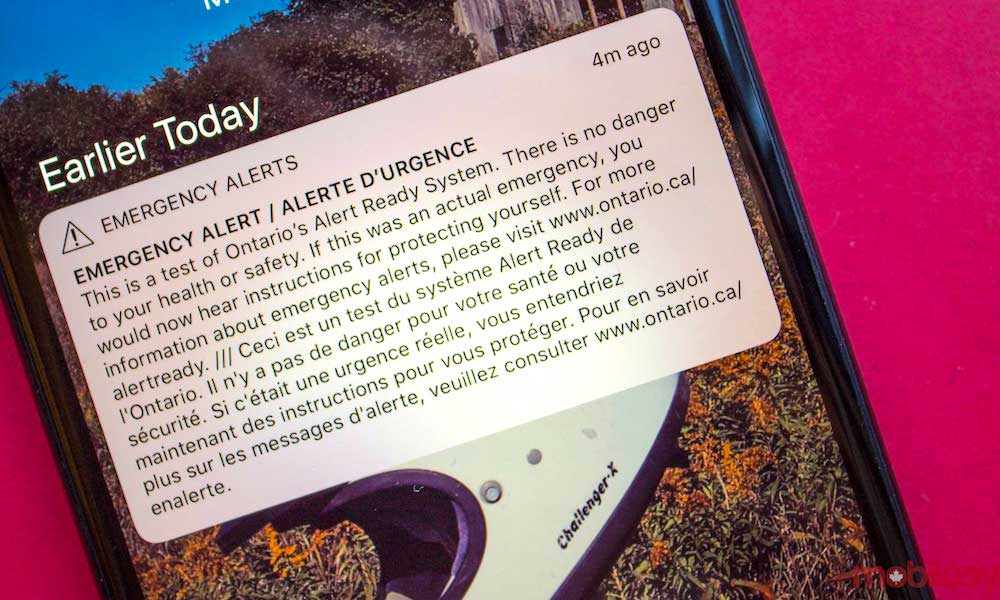Emergency Alerts Could Come to Apple TV via Apple Music and Apple TV+
 Credit: Mobile Syrup
Credit: Mobile Syrup
Toggle Dark Mode
Earlier this month, we saw an indication that at least some Apple TV users were seeing emergency alerts on their set-top boxes, leading to speculation that Apple might have quietly hidden an emergency alert feature in tvOS 13.
Although on closer analysis it was much more likely that the users who saw these emergency alerts received them through specific streaming apps on the Apple TV, rather than tvOS itself, the ability to receive emergency alerts on your Apple TV may become far more common — at least in the U.S. — if a new proposed bill becomes law.
In response to a false missile alert that went out across Hawaii in early 2018, U.S. Senators Brian Schatz and John Thune have reintroduced the Reliable Emergency Alert Distribution Improvement (READI) Act to attempt to address the way that emergency alerts are managed and transmitted, as well as the types of devices they’re received on.
When a missile alert went out across Hawai‘i last year, some people never got the message on their phones, while others missed it on their TVs and radios. Even though it was a false alarm, the missile alert exposed real flaws in the way people receive emergency alerts.
U.S. Senator Brian Schatz
In order to ensure that as many users as possible are notified of a serious emergency, the new act would also mandate that government emergency alerts be repeated on TV and radio rather than only being sent out once, but with many users shifting away from traditional terrestrial radio and broadcast television, it also concedes that there’s a need to ensure that emergency alerts are sent out via those services that are replacing television and radio — “online video and audio streaming services.” While the proposal specifically mentioned Netflix and Spotify, this would undoubtedly also include Apple’s own streaming services such as Apple TV+ and Apple Music.
The Current System
As things presently stand, U.S. government emergency alerts are only sent out through traditional telecommunications channels — terrestrial broadcasters, cable and wireless television providers, satellite audio radio service and television providers, and mobile cellular networks.
This means that you can get an emergency alert on your television or radio, but only if you’re watching traditional programming or listening to a traditional radio station. Similarly, you can receive alerts on an iPhone, Apple Watch, or iPad when it’s connected to an LTE network, but not when you’re only on Wi-Fi only, as there is currently no internet pathway for emergency alerts to take.
This is the main reason why we were skeptical that tvOS 13 was actually receiving emergency alerts. While it would theoretically be possible for a provider such as Apple to collect emergency alerts and transmit them to the Apple TV over the internet, issues around location privacy would make this a challenge to ensure that users only received alerts that were relevant to their particular area.
How It Could Work
An expansion of emergency alerts to audio and video streaming services may sound simple on the surface, but it’s really not just a matter of broadcasting alerts to Apple users — there would actually be a number of issues that would need to be worked out if the alerts were to be targeted in the way that they’re designed to.
Firstly, Apple would need to develop a way to take location information into account, and with Apple’s penchant for user privacy, collecting and tracking the locations of its users to determine who to send alerts to would probably be out of the question. A more feasible solution would be to broadcast all alerts to all Apple subscribers, tagged to indicate what areas they’re for, and then rely on the receiving devices to discard or ignore alerts that are not for them.
There would also be the question of how alerts would be handled on Apple’s mobile devices. For example, a user on an iPhone will already receive emergency alerts via the cellular network, and probably doesn’t need to receive a duplicate alert through Apple Music and/or Apple TV+. However, Apple also can’t simply assume that iPhone users are exempt from these kinds of streaming-based alerts.
The system as it’s currently being proposed would also rely on an Apple TV user actively watching or listening to a streaming service, since the alerts would be transmitted through those channels. In an ideal situation, however, Apple and policy makers should build a solution that could notify users of an emergency alert on their set-top boxes regardless of what app is being used, or even if it’s just sitting at the screensaver.
While none of these problems are difficult to solve, it does demonstrate that there’s a lot more to implementing this solution properly in a digital streaming world than the old broadcast television methods addressed. Hopefully lawmakers will realize this as they’re exploring bringing emergency alerts to more modern technology platforms.






